How to Build a Wooden Vanity Table: A Guide
Creating a beautiful wooden vanity table is not just a project; it's an opportunity to express your personal style while adding functionality to your space. Imagine waking up every morning to a stunning piece of furniture that you crafted with your own hands! This guide is designed to walk you through every step of the process, from selecting the right materials to putting on those finishing touches that will make your vanity table truly shine. Whether you're a seasoned woodworker or a complete beginner, you'll find valuable insights here that can help you create a piece that not only complements your decor but also serves as a testament to your craftsmanship.
When it comes to building a vanity table, the choice of materials is crucial. Not only does the type of wood you select influence the table's durability, but it also affects its overall aesthetic appeal. For instance, hardwoods like oak and maple are known for their strength and beautiful grain patterns, making them excellent choices for furniture that will last a lifetime. On the other hand, softer woods like pine are easier to work with and can be more cost-effective. It's essential to consider the following factors when choosing your wood:
- Durability: How well will the wood hold up over time?
- Aesthetics: Does the wood's color and grain fit your vision?
- Cost: Is the wood within your budget?
By weighing these factors, you can choose the best wood for your vanity table that meets both your functional and design needs.
No woodworking project can be completed without the right tools. Having the proper equipment not only makes the job easier but also ensures a higher quality finish. Here are some essential tools you'll need:
- Power Tools: Saws, drills, and sanders can speed up the process and provide cleaner cuts.
- Hand Tools: Chisels and hand saws offer precision and control for intricate details.
Investing in quality tools will pay off in the long run, as they can enhance your woodworking experience and the final product.
Understanding the difference between power tools and hand tools is essential for making informed decisions about your project. Power tools, such as circular saws and electric drills, are perfect for larger cuts and can save you time. However, they can be intimidating for beginners. On the flip side, hand tools provide a level of precision that power tools often can't match, allowing you to work in tighter spaces and make delicate adjustments. Think of it this way: power tools are like a sports car—fast and powerful but requiring skill to handle, while hand tools are like a trusty bicycle—reliable and easy to control.
Here are some power tools that can significantly ease your vanity table project:
| Tool | Purpose |
|---|---|
| Circular Saw | For making straight cuts in large pieces of wood. |
| Drill | For creating holes and driving screws. |
| Sander | For smoothing surfaces and preparing for finishing. |
While power tools are fantastic, don't underestimate the importance of hand tools for your vanity table project. Here are a few must-haves:
- Chisels: Perfect for fine detail work.
- Hand Saw: Ideal for making precise cuts.
- Measuring Tape: Ensures your dimensions are accurate.
Safety should always be your top priority when working with tools and materials. Always wear protective gear such as goggles and gloves, and ensure your workspace is clean and organized. Familiarize yourself with each tool's operating instructions to prevent accidents. Remember, a safe workshop is a happy workshop!
Designing your vanity table is where your creativity can truly shine. Consider the size and shape that will best fit your space. Do you want a sleek, modern design, or something more traditional? Additionally, think about features that will enhance functionality, such as built-in lighting or a mirror. A well-thought-out design can turn a simple piece of furniture into a stunning focal point in your room.
Effective storage is key to a functional vanity table. You might want to explore various storage options, such as:
- Drawers: Perfect for keeping makeup and accessories organized.
- Shelves: Great for displaying decorative items or additional storage.
By integrating these solutions into your design, you can create a space that is not only beautiful but also practical.
The finish of your vanity table can dramatically affect its appearance and longevity. Options include stains, paints, and sealants, each offering different aesthetic qualities and levels of protection. For a natural look, consider a clear sealant that showcases the wood's grain. If you're feeling bold, a vibrant paint can make a statement and add a pop of color to your decor.
Now that you've gathered your materials and tools, it's time to assemble your vanity table! Follow the step-by-step guidance on cutting, joining, and securing each component to ensure a sturdy build. Remember, patience is key here; rushing through assembly can lead to mistakes that are difficult to fix later.
Understanding various joining techniques can elevate your woodworking skills. Consider methods such as doweling, mortise and tenon, or pocket holes to create strong joints that will stand the test of time. Each technique has its advantages and can be chosen based on your comfort level and desired aesthetics.
As you approach the final assembly phase, take your time to align parts carefully and secure joints properly. A well-aligned vanity table not only looks better but also functions better. Don't hesitate to use clamps to hold pieces in place while the glue dries, ensuring a professional finish.
Once your vanity table is complete, proper maintenance is essential for longevity. Regular cleaning and polishing will keep the wood looking fresh and new. Avoid using harsh chemicals that could damage the finish, and instead opt for gentle cleaning solutions.
To maintain the appearance of your vanity table, consider the following cleaning tips:
- Use a soft, damp cloth to wipe down surfaces regularly.
- Apply a wood polish to enhance shine and protect the finish.
- Avoid placing hot items directly on the wood to prevent damage.
Over time, wear and tear may occur. Learning how to repair scratches and minor damages can keep your vanity table looking pristine. For small scratches, a touch-up marker or wood filler can work wonders. For deeper gouges, you may need to sand down the area and reapply the finish. With a little care, your vanity table can remain a beautiful part of your home for years to come.
Q: What type of wood is best for a vanity table?
A: Hardwoods like oak and maple are excellent choices for durability and aesthetics, while softwoods like pine can be more cost-effective.
Q: Do I need power tools to build a vanity table?
A: While power tools can make the job easier, it's possible to complete the project using only hand tools, especially if you're comfortable with them.
Q: How can I ensure my vanity table is stable?
A: Make sure to use proper joining techniques and secure all parts tightly during assembly to ensure stability.

Choosing the Right Materials
When it comes to building your own wooden vanity table, one of the most critical steps is . The type of wood you select not only affects the overall aesthetics of your table but also its durability and longevity. There are several types of wood available, each with its own unique characteristics. For instance, hardwoods like oak and maple are known for their strength and resistance to wear, while softer woods like pine are easier to work with but may not withstand heavy use as well.
Before diving into your project, consider the following factors that can influence your material choice:
- Durability: If your vanity table will see heavy use, opt for a hardwood that can withstand the test of time.
- Cost: Different woods come with varying price tags, so it’s essential to find a balance between quality and budget.
- Aesthetic Appeal: The grain, color, and texture of the wood can significantly impact the look of your finished product.
Here’s a quick comparison of some popular wood types you might consider:
| Wood Type | Durability | Cost | Aesthetic |
|---|---|---|---|
| Oak | High | Medium to High | Rich grain with a warm tone |
| Maple | High | Medium | Light color with a fine grain |
| Pine | Medium | Low | Light color with a rustic charm |
| Cherry | Medium to High | High | Darkens beautifully over time |
Choosing the right material is not just about picking something that looks good; it’s about finding a wood that fits your lifestyle and the functionality you need. For example, if you have children or pets, a more durable wood like oak might be a better choice than pine, which can dent and scratch more easily. Additionally, consider if you want to stain or paint your vanity table; some woods take finishes better than others, which can affect your final look.
In conclusion, take your time to research and select the right materials for your vanity table. A well-chosen wood will not only enhance the beauty of your piece but will also ensure it remains a cherished part of your home for years to come.

Essential Tools for the Project
When embarking on the exciting journey of building your own wooden vanity table, having the right tools at your disposal is crucial. The tools you choose can make the difference between a frustrating experience and a smooth, enjoyable project. Think of it like cooking: you wouldn’t want to make a gourmet meal without a good set of knives, right? Similarly, the right tools will not only enhance your efficiency but also improve the quality of your craftsmanship. So, let’s dive into what you’ll need!
First and foremost, you’ll want to gather a selection of power tools and hand tools. Each type serves its unique purpose, and understanding their roles will help you make informed decisions. For instance, power tools can significantly speed up the process of cutting and shaping wood, while hand tools are indispensable for achieving precision and detail in your work.
Here’s a quick rundown of the essential tools you should consider:
- Power Tools: These are your heavy hitters. A circular saw is perfect for making straight cuts, while a jigsaw can handle curves and intricate designs. A drill is essential for creating holes and driving screws, and a sander will help you achieve that smooth, polished finish.
- Hand Tools: Don’t underestimate the power of hand tools! A chisel allows for fine detailing, while a hand saw is great for making precise cuts without the noise of power tools. A tape measure and square are also vital for ensuring accuracy in your measurements.
Now, let’s break it down a little further. When selecting your power tools, consider their ergonomics and ease of use. You want tools that feel comfortable in your hands, especially if you plan to work on your vanity table for extended periods. Additionally, pay attention to the brand reputation and warranty options. Investing in quality tools can save you money and hassle in the long run.
On the other hand, hand tools may seem old-fashioned, but they offer unmatched precision. For example, using a chisel allows you to carve out intricate designs that power tools simply can’t replicate. Plus, they encourage you to slow down and appreciate the craftsmanship involved in your project. If you’re new to woodworking, starting with hand tools can also help you build a solid foundation of skills.
Before you start your project, ensure that you also have some safety gear on hand. This includes safety glasses to protect your eyes, hearing protection for loud tools, and a dust mask to keep harmful particles at bay. Remember, safety should always be your top priority when working with tools!
In summary, having the right tools is a game-changer for your wooden vanity table project. By combining the efficiency of power tools with the precision of hand tools, you’ll set yourself up for success. Just think of it as assembling your own toolkit of creativity and craftsmanship. Happy building!
Q: What is the most important tool for building a vanity table?
A: While all tools play a significant role, a good quality circular saw is often considered essential for making straight cuts efficiently.
Q: Can I use hand tools instead of power tools?
A: Absolutely! Hand tools can be used successfully for all aspects of building a vanity table, but they may require more time and effort.
Q: How do I maintain my tools?
A: Regular cleaning, proper storage, and periodic sharpening will keep your tools in great shape for many projects to come.
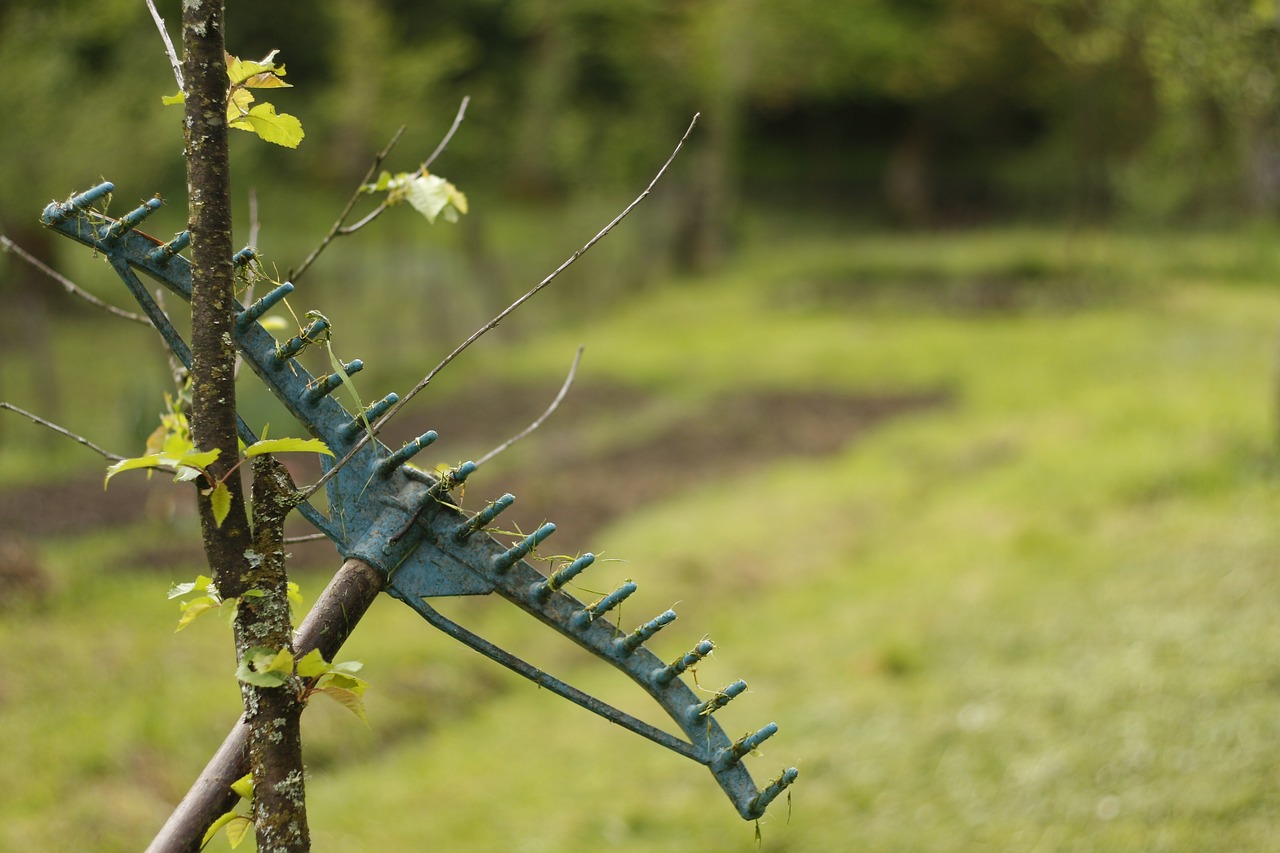
Power Tools vs. Hand Tools
When embarking on the journey of building your own wooden vanity table, one of the first decisions you'll face is whether to use power tools or hand tools. Each has its own unique advantages and drawbacks, and understanding these can significantly impact your woodworking experience. Let’s dive into the world of tools and see how they stack up against each other!
Power tools are often the go-to choice for many DIY enthusiasts and professional woodworkers alike. They offer speed and efficiency, allowing you to complete tasks in a fraction of the time it would take with hand tools. For instance, a power saw can slice through wood like butter, making quick work of cutting down lumber to size. This can be particularly beneficial when you’re working on larger projects or when time is of the essence. However, power tools can also come with a steep learning curve and require a certain level of safety awareness. They can be intimidating for beginners, and without proper handling, they can lead to accidents.
On the flip side, hand tools provide a level of precision and control that power tools sometimes lack. Think of chisels, hand saws, and planes—they allow you to work closely with the wood, making fine adjustments and creating intricate details that might be difficult to achieve with a power tool. Hand tools are also generally more affordable and portable, making them an excellent choice for those who might not have a dedicated workshop or who are just starting out. Plus, there’s something incredibly satisfying and almost therapeutic about the tactile experience of using hand tools, don’t you think?
So, how do you decide which route to take? It really depends on your skill level, the complexity of your project, and your personal preference. Many seasoned woodworkers advocate for a combination of both. For example, you might use a power saw for rough cuts and then switch to hand tools for the finishing touches. This hybrid approach can yield the best of both worlds, allowing you to harness the speed of power tools while still enjoying the finesse that hand tools provide.
Here’s a quick comparison table to highlight the key differences:
| Feature | Power Tools | Hand Tools |
|---|---|---|
| Speed | Fast and efficient | Slower, requires more effort |
| Precision | Good for rough cuts | Excellent for detail work |
| Cost | Typically more expensive | Generally more affordable |
| Portability | Requires power source | Easy to transport |
| Learning Curve | Steeper for beginners | More intuitive for most |
Ultimately, the choice between power tools and hand tools boils down to what feels right for you and your project. Whether you’re zipping through cuts with a circular saw or meticulously shaping edges with a chisel, the most important thing is to enjoy the process and create something beautiful. So, which tools will you choose for your wooden vanity table? The adventure awaits!
- Do I need both power tools and hand tools? - While it's not necessary, many find that a combination of both enhances their woodworking experience.
- Are power tools safer than hand tools? - Power tools can be more dangerous if not used properly, but hand tools also require caution to avoid injury.
- Which is better for beginners? - Hand tools may be easier to start with, but power tools can speed up the learning process once you feel comfortable.
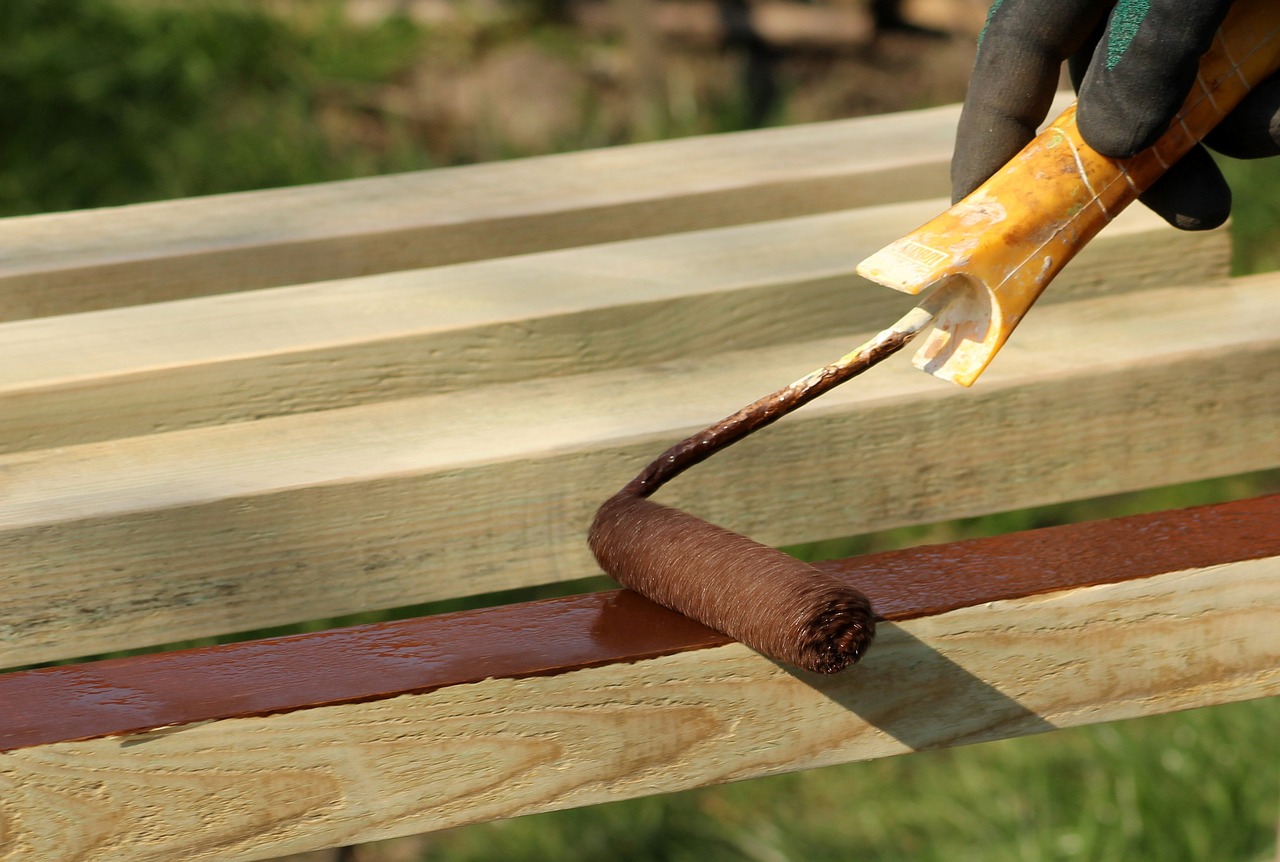
Recommended Power Tools
When it comes to building your wooden vanity table, having the right power tools can make all the difference. These tools not only enhance efficiency but also ensure precision in your cuts and finishes. So, what are the must-have power tools for this project? Let's dive in!
First on the list is the circular saw. This versatile tool is perfect for making straight cuts through thick wood. Whether you're cutting the tabletop or the legs, a circular saw will save you time and provide clean edges. If you’re looking for something a bit more advanced, a table saw is a fantastic investment for anyone serious about woodworking. It allows for more precise cuts and can handle larger sheets of wood with ease.
Next up, we have the drill. A reliable drill is essential for creating holes for screws and dowels, ensuring that your joints are secure. Look for a cordless model for added convenience and mobility. Additionally, a sander is crucial for achieving that smooth finish on your vanity table. Whether you choose a random orbital sander or a belt sander, this tool will help you eliminate any rough spots and prepare your surface for staining or painting.
For those intricate details, a jigsaw is invaluable. This tool allows you to cut curves and shapes that a circular saw simply can't manage. It's perfect for adding unique design elements to your vanity table. Finally, a router can be used for decorative edges and grooves, adding a professional touch to your project.
Here’s a quick overview of these recommended power tools:
| Tool | Purpose |
|---|---|
| Circular Saw | For straight cuts through thick wood. |
| Table Saw | For precise cuts on larger sheets of wood. |
| Drill | For creating holes for screws and dowels. |
| Sander | For smoothing surfaces and preparing for finish. |
| Jigsaw | For cutting curves and intricate shapes. |
| Router | For decorative edges and grooves. |
In summary, investing in these power tools will not only make your vanity table project easier but also more enjoyable. Remember, the right tools can turn a challenging task into a fun and rewarding experience. So, gear up and get ready to create a stunning piece of furniture that you can be proud of!
Q: Do I need to buy all these power tools for my vanity table project?
A: While having all these tools can be beneficial, you can start with the essentials like a circular saw, drill, and sander. You can always add more tools to your collection as you progress in woodworking.
Q: Can I use hand tools instead of power tools?
A: Yes, you can use hand tools, but it may take significantly longer and require more effort. Power tools are designed to make the process faster and more efficient.
Q: What safety precautions should I take when using power tools?
A: Always wear protective gear such as goggles, ear protection, and a dust mask. Make sure to read the user manuals and follow safety guidelines for each tool.

Must-Have Hand Tools
When it comes to building your wooden vanity table, having the right hand tools is essential for achieving precision and quality. Unlike power tools, hand tools allow for greater control, especially in intricate tasks where finesse is key. So, what are the that every aspiring woodworker should have in their arsenal? Let’s dive into the essentials that will make your project not only easier but also more enjoyable.
First and foremost, a good quality hand saw is indispensable. It’s your go-to tool for making clean cuts in wood. A fine-toothed saw is perfect for detailed work, while a crosscut saw can handle larger pieces. Think of it like a chef’s knife; the right blade can make all the difference in the world. Pair that with a chisel set for shaping and refining edges. Chisels come in various sizes and shapes, allowing you to achieve the intricate detailing that can elevate your vanity table from ordinary to extraordinary.
Next up is a hand plane. This tool is fantastic for smoothing surfaces and adjusting thickness. It’s like a magic wand that transforms rough wood into a sleek finish. You’ll find that a hand plane can really enhance the overall look of your vanity table, making it feel polished and professional. Don't forget about a measuring tape and a square; these are your best friends when it comes to ensuring your cuts are accurate and your joints fit snugly. After all, no one wants a wobbly table!
For assembly and joining, having a hammer and a set of wooden dowels is crucial. Doweling is a classic method for creating strong joints, and a hammer will help you drive those dowels in securely. Think of it as the glue that holds everything together, providing strength and stability to your creation. Lastly, a clamp or two is essential for holding pieces in place while the glue dries or while you fasten them together. Without clamps, you might find yourself in a frustrating battle against gravity!
In summary, the right hand tools can turn a challenging woodworking project into a rewarding experience. Investing in high-quality tools not only makes the task easier but also enhances the final product. So, gather your hand tools, and get ready to unleash your creativity as you build your beautiful wooden vanity table!
Here’s a quick overview of the must-have hand tools:
| Tool | Purpose |
|---|---|
| Hand Saw | For making clean cuts in wood. |
| Chisel Set | For shaping and refining edges. |
| Hand Plane | For smoothing surfaces and adjusting thickness. |
| Measuring Tape | For ensuring accurate measurements. |
| Square | For checking and marking right angles. |
| Hammer | For driving dowels and assembling pieces. |
| Wooden Dowels | For creating strong joints. |
| Clamps | For holding pieces together during assembly. |
Q: What type of wood is best for a vanity table?
A: Hardwoods like oak, maple, or cherry are excellent choices due to their durability and aesthetic appeal.
Q: Can I use power tools instead of hand tools?
A: Yes, power tools can speed up the process, but hand tools offer precision and control, especially for detailed work.
Q: How do I maintain my hand tools?
A: Regular cleaning, oiling, and proper storage will keep your hand tools in great condition for years to come.
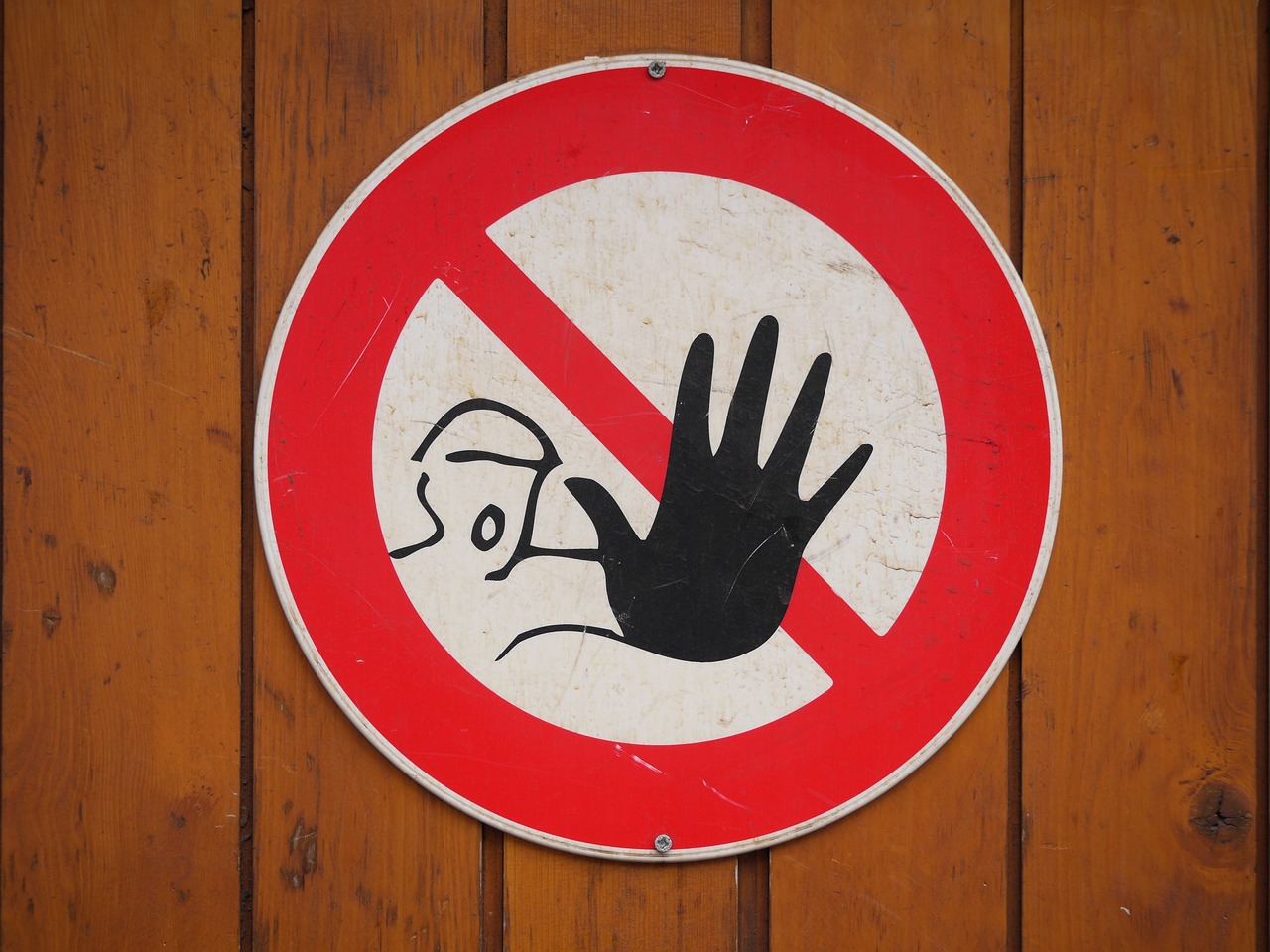
Safety Precautions
When embarking on the journey of building your own wooden vanity table, the excitement can sometimes overshadow the importance of safety. However, it’s crucial to prioritize safety to ensure that your woodworking experience is not only enjoyable but also accident-free. First and foremost, always wear appropriate protective gear. This includes safety goggles to shield your eyes from flying debris, a dust mask to avoid inhaling harmful particles, and ear protection when using loud power tools. It's amazing how a few simple precautions can make a huge difference in preventing injuries!
Additionally, make sure to work in a well-ventilated area. Woodworking can create a lot of dust and fumes, especially when sanding or applying finishes. A clutter-free workspace is also vital; it not only helps you focus but minimizes the risk of tripping or knocking over tools. You wouldn’t want your project to end with a trip to the emergency room, right?
Another essential aspect of safety is understanding how to properly use your tools. Each tool has its own set of guidelines, and following these can prevent accidents. For example, when using a saw, always keep your hands clear of the blade and use push sticks for narrow cuts. If you’re unsure about how to operate a tool, don’t hesitate to consult the manual or seek advice from more experienced woodworkers. Remember, there’s no shame in asking for help!
Furthermore, it’s wise to keep a first aid kit nearby. Accidents can happen even to the most cautious of us, so having supplies on hand can help you respond quickly to minor injuries. In case of serious injuries, don’t hesitate to call for help. Your safety is paramount!
Lastly, it’s beneficial to familiarize yourself with the tools and materials you’re working with. For instance, knowing the properties of different woods can help you understand how they behave under various conditions, which can impact your project and safety. By being informed, you can make smarter choices and avoid potential hazards.
In conclusion, woodworking is a fulfilling and creative endeavor, but safety should always come first. By taking these precautions seriously, you can focus on crafting a stunning vanity table without the worry of accidents. So gear up, stay alert, and let your creativity flow!
As you dive into the world of woodworking, you might have some lingering questions. Here are some frequently asked questions that can help you navigate your project with confidence:
- What protective gear should I wear while woodworking? Always wear safety goggles, a dust mask, and ear protection when using power tools.
- How can I ensure my workspace is safe? Keep your area clean and organized, and ensure proper ventilation to minimize dust and fumes.
- What should I do if I get injured while working? Keep a first aid kit handy, and for serious injuries, seek medical help immediately.
- Where can I find more information on using specific tools? Consult the user manuals or look for online tutorials and videos that demonstrate proper usage.
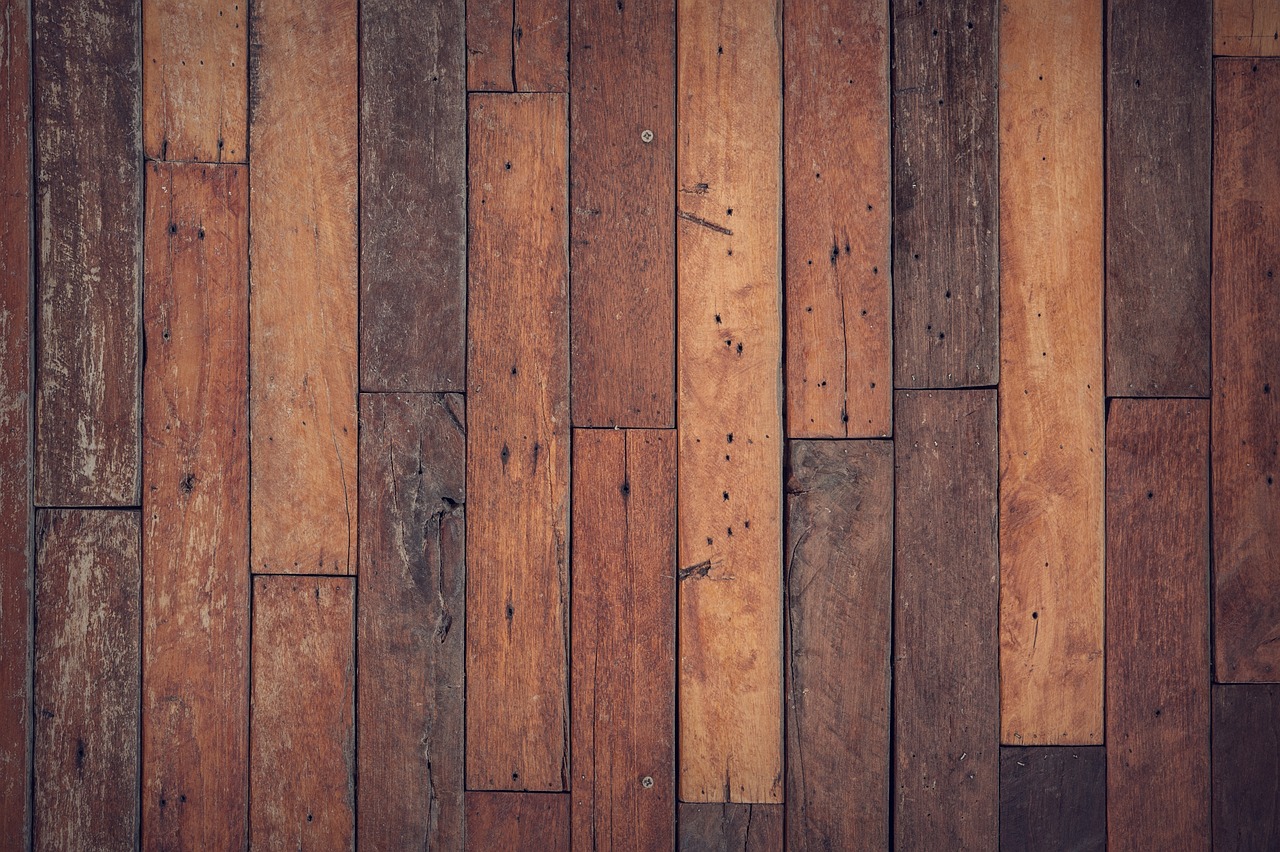
Designing Your Vanity Table
When it comes to designing your own vanity table, the possibilities are as vast as your imagination! This is where functionality meets style, and getting the design just right can make a world of difference in your daily routine. Think about it: your vanity table is not just a piece of furniture; it’s a personal sanctuary where you prepare for your day, unwind in the evening, and perhaps even indulge in a little self-care. So, how do you create a design that’s both practical and aesthetically pleasing?
First and foremost, consider the size of your vanity table. It should fit comfortably in your space without overwhelming the room. Measure your area and think about the height that works best for you. A standard height is usually around 30 inches, but if you're taller or shorter, you might want to adjust this. The shape is just as important; whether you choose a rectangular, round, or even an L-shaped design, ensure it complements the rest of your decor. Remember, your vanity table should feel like a natural extension of your space.
Next up, let’s talk about storage solutions. A well-designed vanity table should cater to your specific needs. Do you have a lot of beauty products, or do you prefer a minimalist approach? If you’re leaning towards the former, incorporating drawers and shelves is a must. Consider the following storage options to keep your essentials organized:
- Drawers: Perfect for hiding away makeup and accessories.
- Shelves: Great for displaying your favorite items while keeping them within reach.
- Cabinets: Ideal for larger items that you want to keep out of sight.
Don’t forget about additional features that can make your vanity table even more functional. For example, adding a mirror is essential, but you might also want to consider built-in lighting. A well-lit area can make all the difference when you’re applying makeup or doing your hair. Think about installing LED strip lights around the mirror or using a stylish lamp that complements your design.
Now, let’s dive into the finish. The finish you choose can dramatically affect the overall look of your vanity table. Are you going for a rustic vibe with a natural wood stain, or do you prefer a sleek, modern look with a high-gloss paint? Here are a few popular finishing options:
| Finish Type | Characteristics | Best For |
|---|---|---|
| Stain | Enhances the natural grain of the wood | Rustic or traditional designs |
| Paint | Completely covers the wood, allowing for color customization | Modern or eclectic designs |
| Sealant | Protects the wood from moisture and wear | All types of designs |
In conclusion, designing your vanity table is all about personal expression. It should reflect your style while also being practical for your everyday needs. Take your time to think through the size, shape, storage solutions, and finish. The end result will be a beautiful, functional piece that enhances your home decor and serves as a daily reminder to take a moment for yourself.
Q: How much space do I need for a vanity table?
A: Ideally, you should allow at least 30 inches of width and 18 inches of depth for a comfortable vanity table setup. Make sure to consider additional space for a chair and movement.
Q: Can I customize the design of my vanity table?
A: Absolutely! Customizing your vanity table allows you to create a piece that fits your specific needs and style. Feel free to mix and match materials, shapes, and finishes.
Q: What type of wood is best for a vanity table?
A: Hardwoods like oak, maple, or cherry are excellent choices for durability and aesthetics. However, softwoods like pine can also work well, especially if you plan to paint or stain them.

Incorporating Storage Solutions
When it comes to designing your wooden vanity table, one of the most important aspects to consider is storage solutions. After all, a beautiful vanity table is not just about aesthetics; it should also be functional and organized. Imagine sitting down at your vanity and having everything you need at your fingertips! This is where thoughtful storage design comes into play. You can integrate various storage options that not only enhance the usability of your table but also complement its overall look.
Start by considering the size and layout of your vanity table. Do you have enough space for drawers, or would shelves be a more practical solution? A common approach is to incorporate drawers beneath the tabletop. These can be used to store makeup, brushes, and other beauty essentials. You might want to opt for soft-close drawers that provide a quiet and gentle closing action, which is especially nice if you’re getting ready early in the morning or late at night.
Another fantastic storage solution is to add open shelves either beneath the table or on the sides. Open shelving allows for easy access to frequently used items while also providing a space to display decorative pieces, like scented candles or plants, that can enhance your vanity's aesthetic appeal. Consider using a mix of both drawers and shelves to create a balance between hidden storage and display space. This way, you can keep clutter at bay while also showcasing items you love.
If you’re feeling a bit more adventurous, you might want to think about incorporating compartments within your drawers. You can create dividers to keep your items organized—think of it like a mini toolbox for your beauty products! This can help prevent chaos and make it easy to find exactly what you need without rummaging through a pile of products. You can use materials like plywood or even repurpose small boxes to create these compartments.
Additionally, don’t forget about the vertical space. If your vanity table is positioned against a wall, consider adding a small wall-mounted shelf or a pegboard above it. This can hold items like hair tools, jewelry, or even a small mirror, keeping your workspace tidy while ensuring that everything is within reach. The vertical elements can also add a unique design flair to your vanity table, making it a true statement piece in your room.
Overall, incorporating thoughtful storage solutions into your vanity table design can significantly enhance both its functionality and aesthetic appeal. By mixing drawers, shelves, and creative storage compartments, you'll create a space that is not only beautiful but also a joy to use every day. So, as you embark on this woodworking project, keep in mind that a little planning goes a long way in ensuring your vanity table meets all your needs!
- What type of wood is best for a vanity table?
The best type of wood depends on your budget and style preferences. Popular choices include oak for its durability and beauty, pine for affordability, and walnut for a luxurious finish.
- How can I make my vanity table more organized?
Incorporate drawers with dividers, use open shelves for frequently used items, and consider wall-mounted storage solutions to maximize space.
- What finish should I use on my vanity table?
A clear sealant will protect the wood while letting its natural beauty shine through. Stains can add color, and paints can offer a pop of personality.
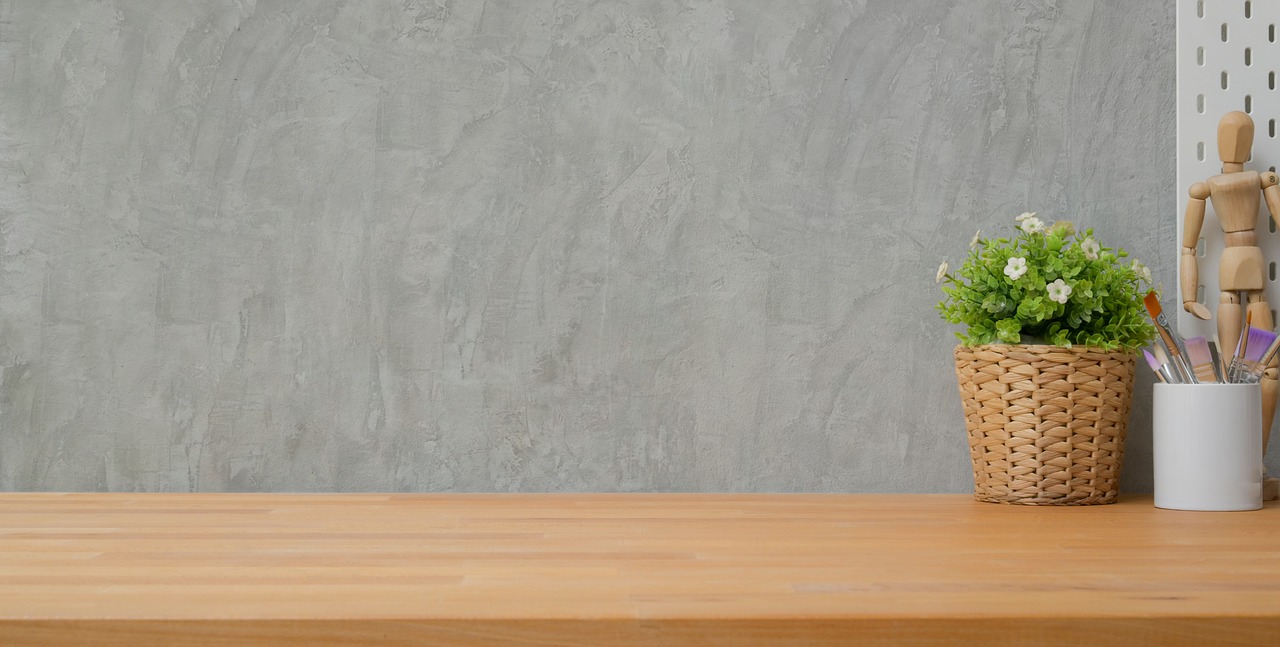
Choosing the Right Finish
When it comes to giving your wooden vanity table that perfect final touch, the finish you choose can make all the difference. It's not just about aesthetics; the finish also plays a crucial role in protecting the wood from wear and tear, moisture, and other environmental factors. So, how do you choose the right finish for your project? Let’s break it down!
First off, consider the look you want to achieve. Do you prefer a natural wood finish that showcases the grain, or are you leaning towards a bold color? Here are some popular finishing options:
- Stains: These penetrate the wood and enhance its natural beauty. They come in a variety of shades, allowing you to customize the look while still showing off the wood grain.
- Paint: If you want to completely change the appearance of the wood, paint is your best friend. It offers endless color options and can provide a modern or classic look depending on your choice.
- Sealants: These are essential for protecting your vanity table from spills and scratches. Sealants can be used over stains or paints to add a layer of durability.
Each of these options can be tailored to fit your style and needs. For example, if you're going for a rustic vibe, a natural stain might be your best bet. On the other hand, if you're looking to make a statement, a vibrant paint color could be the way to go. Just remember that the finish you choose should complement the overall design of your space.
Moreover, the application process is also something to consider. Some finishes, like stains, are relatively easy to apply with a brush or cloth, while others, like certain paints, might require a sprayer for an even coat. Preparation is key! Make sure to sand the surface of your vanity table thoroughly before applying any finish. This not only helps the finish adhere better but also ensures a smoother final look.
Lastly, don't forget about maintenance! Different finishes require different levels of care. For instance, while a painted surface might be easy to wipe clean, it may also chip over time. Conversely, a well-sealed stained finish can withstand the test of time but may need occasional reapplication to keep it looking fresh. Always check the manufacturer's instructions for specific care guidelines.
In summary, choosing the right finish for your wooden vanity table is a blend of personal preference and practical considerations. By evaluating your desired look, the application process, and maintenance needs, you can select a finish that not only enhances the beauty of your vanity but also ensures its longevity. Happy finishing!
Q: What is the best finish for a wooden vanity table?
A: The best finish depends on your style and how you plan to use the table. Stains and sealants are great for showcasing the wood grain, while paint offers more color options. Always consider durability and maintenance when making your choice.
Q: How do I apply a stain or paint to my vanity table?
A: Start by sanding the surface to ensure a smooth application. Use a brush or cloth for stains and consider a sprayer for paint. Apply in thin layers, allowing each coat to dry completely before adding another.
Q: How often should I reapply the finish on my vanity table?
A: This depends on the type of finish used and how much wear the table experiences. Generally, a sealant may need reapplication every few years, while painted surfaces may require touch-ups more frequently.

Assembly and Construction Steps
Once you have gathered all your materials and tools, it's time to dive into the exciting part: assembling your wooden vanity table! This phase is where your vision starts to take shape, and every cut, joint, and screw plays a critical role in the final product. Begin by laying out all your components on a flat surface, ensuring you have ample space to work without feeling cramped. This not only helps in visualizing the final design but also allows for easy access to everything you need.
The first step in the assembly is to cut your wood pieces to the specified dimensions. Make sure to double-check your measurements before making any cuts. A small error at this stage can lead to misalignments later on. Use a miter saw for precise cuts, and always remember to wear your safety goggles! Once all pieces are cut, it's time to start joining them together.
Joining techniques are crucial for ensuring that your vanity table is sturdy and durable. Here are a few popular methods you might consider:
- Doweling: This involves drilling holes in both pieces of wood and inserting wooden dowels to secure them together. It provides a strong joint and is relatively easy to do.
- Mortise and Tenon: This traditional woodworking technique creates a strong joint by fitting a protruding tenon into a mortise hole. It's perfect for table legs and frames.
- Pocket Holes: Using a pocket hole jig, you can drill angled holes to create hidden joints. This method is quick and allows for easy assembly.
After you have chosen your joining method, begin by assembling the tabletop first. Lay your top piece flat and attach the supporting beams underneath using your chosen technique. Make sure everything is square and aligned properly. Once the top is secure, move on to attaching the legs. If you're using dowels or mortise and tenon joints, ensure that you apply wood glue for added strength before securing the joints with screws.
As you progress, keep an eye on alignment. Use a level to ensure that your table is even, as this will affect not only its appearance but also its functionality. The final assembly phase is where you can add any additional features you may have planned, such as drawers or shelves. These elements can be attached using similar joining techniques, but ensure that they are measured and positioned correctly to avoid any awkwardness in usage.
Once everything is assembled, it’s time for the finishing touches. Sand down any rough edges and surfaces to ensure a smooth finish. You might want to use a random orbital sander for larger areas and hand sand the corners for precision. After sanding, wipe down the surfaces to remove any dust before applying your chosen finish. This could be a stain, paint, or sealant, depending on the look you’re going for.
Finally, allow your vanity table to cure as per the instructions of your finish product. This is crucial for durability, ensuring that your hard work pays off in the long run. And just like that, you’ve transformed raw wood into a functional and beautiful piece of furniture!
Q: How long does it take to build a wooden vanity table?
A: The time it takes can vary based on your skill level and the complexity of the design. Generally, it can take anywhere from a few hours to a couple of days, including drying time for finishes.
Q: What type of wood is best for a vanity table?
A: Hardwoods like oak, maple, or cherry are excellent choices due to their durability and aesthetic appeal. However, softer woods like pine can also work well, especially if you're looking for a more rustic look.
Q: Do I need any special skills to build a vanity table?
A: Basic woodworking skills are helpful, but many beginners can successfully build a vanity table by following detailed plans and instructions. Practice and patience are key!
Q: How can I maintain my wooden vanity table?
A: Regular cleaning with a soft cloth, avoiding harsh chemicals, and applying a protective finish periodically will help keep your vanity table looking new.

Joining Techniques
When it comes to building a wooden vanity table, the you choose can make a world of difference in both the durability and aesthetic appeal of your piece. Think of it like the foundation of a house; if it’s not solid, everything built on top of it will be shaky. There are several popular methods for joining wood, each with its own set of advantages and ideal applications. Understanding these techniques will help you create a vanity table that not only looks great but stands the test of time.
One of the most traditional methods is the dowel joint. This technique involves drilling holes into both pieces of wood and inserting wooden dowels to hold them together. It’s a fantastic choice for aligning edges perfectly, giving you a clean look without visible fasteners. However, it does require precise drilling, so a steady hand is essential.
Another classic method is the mortise and tenon joint. This technique is renowned for its strength and is often used in high-quality furniture. Essentially, one piece of wood has a hole or mortise cut into it, while the other has a matching projection or tenon. When joined, this creates a very sturdy connection. It’s particularly useful for the legs and frame of your vanity table, ensuring stability and longevity.
If you’re looking for something a bit more modern and easier to execute, consider the pocket hole joint. This method involves drilling angled holes in one piece of wood and using screws to fasten it to another piece. It’s quick to set up and provides a strong hold, making it ideal for beginners. Plus, the screws are hidden from view, so you can maintain a sleek appearance.
For those who prefer a more decorative touch, biscuits can be a great option. This technique involves using small, oval-shaped pieces of wood, known as biscuits, that fit into slots cut into both pieces of wood. When glued, the biscuits expand, creating a strong bond. This method is often used for joining panels, making it perfect for the tabletop of your vanity.
Here’s a quick comparison of these joining techniques:
| Joining Technique | Strength | Skill Level | Visibility of Fasteners |
|---|---|---|---|
| Dowel Joint | Moderate | Intermediate | Hidden |
| Mortise and Tenon | High | Advanced | Hidden |
| Pocket Hole Joint | Moderate | Beginner | Visible (can be hidden with plugs) |
| Biscuits | Moderate | Intermediate | Hidden |
Ultimately, the choice of joining technique will depend on your skill level, the tools you have at your disposal, and the specific requirements of your vanity table design. Don’t hesitate to experiment with different methods to find what works best for you. Remember, the goal is to create a beautiful, functional piece that you can be proud of!
- What is the best wood for a vanity table? The best wood often depends on your budget and desired aesthetic. Hardwoods like oak and maple are durable and beautiful, while softer woods like pine are more affordable and easier to work with.
- How can I ensure my joints are strong? Always measure accurately and use the right amount of glue or screws for your joining method. Additionally, consider reinforcing joints with brackets or corner braces for added strength.
- Can I mix different joining techniques? Absolutely! Combining techniques can enhance both the strength and design of your vanity table. Just ensure that the methods you choose complement each other.

Final Assembly Tips
When it comes to the final assembly of your wooden vanity table, attention to detail is key. This phase is where all your hard work comes together, and ensuring everything aligns perfectly can make a world of difference. First off, take your time to double-check that all parts are cut to the correct dimensions. Misalignments can lead to frustrating adjustments later on, so it’s better to catch these issues early.
As you begin assembling, start with the main frame of the vanity. Use a level to ensure that everything is even. If your floor is uneven, consider using small shims to make adjustments. When securing joints, it’s important to use the right amount of pressure. Too much can cause the wood to split, while too little may result in a weak structure. A good rule of thumb is to tighten screws or bolts until they are snug but not overly tight.
Additionally, aligning parts correctly is crucial for both aesthetics and functionality. For example, if you’re attaching a drawer, ensure it slides smoothly and fits snugly within its opening. You can use a clamp to hold pieces in place while you secure them, which can help prevent slippage and misalignment. Once everything is in place, take a step back and visually inspect your work. Look for any gaps or inconsistencies that may need to be addressed.
Finally, don’t underestimate the importance of a clean finish. Sand down any rough edges and consider applying a final coat of your chosen finish after assembly. This not only enhances the appearance of your vanity table but also adds a layer of protection against wear and tear. Remember, patience is key—rushing through the final assembly can lead to mistakes that may be difficult to fix later.
Here are some common questions about building a wooden vanity table:
- What type of wood is best for a vanity table? - Hardwoods like oak or maple are excellent choices due to their durability and attractive grain patterns.
- How long does it take to build a vanity table? - Depending on your skill level and the complexity of the design, it can take anywhere from a few days to a week.
- Do I need special tools for assembly? - While basic hand tools will suffice, having a few power tools can significantly speed up the process and improve precision.
- How can I maintain my vanity table? - Regular cleaning and occasional polishing will keep your table looking new. Avoid harsh chemicals that can damage the finish.

Maintenance and Care
Once you've put in the effort to create your stunning wooden vanity table, maintaining it becomes essential to ensure its longevity and beauty. Just like a classic car needs regular tuning to shine on the road, your vanity table requires a bit of TLC to keep it looking brand new. The first step in maintenance is understanding the type of finish you've applied. Some finishes are more durable than others, and knowing this will guide you in how to clean and care for your table.
Cleaning your vanity table should be a routine task, and the right approach can prevent damage while preserving its look. Use a soft, damp cloth to wipe down the surface regularly, avoiding harsh chemicals that can strip the finish. For deeper cleaning, consider a mixture of mild soap and water, but remember to dry the surface immediately afterward to prevent moisture damage. If you notice any spills, clean them up promptly to avoid stains. It's akin to treating a small scratch on your car with a bit of wax; the sooner you address it, the less likely it is to become a bigger problem.
Another important aspect of maintenance is protecting your vanity table from wear and tear. Consider placing coasters under makeup bottles and other items to prevent rings and scratches. You might also want to invest in a protective mat or tray for frequently used items. Think of this as putting a seat cover on your car; it protects the interior and keeps everything looking fresh. Additionally, avoid placing hot items directly on the wood, as heat can damage the finish, much like how a hot pot can ruin a kitchen countertop.
Over time, your vanity table may develop minor scratches or dents. Don't fret! Repairing these imperfections can be straightforward. For small scratches, you can use a wood filler that matches the color of your table. Simply apply it, let it dry, and then sand it down gently until smooth. For deeper scratches, consider using a stain marker or a touch-up pen designed for furniture. It's like giving your table a little spa treatment; a bit of care can rejuvenate its appearance and keep it looking chic.
Lastly, remember that seasonal changes can affect wooden furniture. If you live in an area with high humidity or dry conditions, consider using a humidifier or dehumidifier to maintain a stable environment. Wood is a natural material that reacts to its surroundings, so keeping it in a controlled environment will help prevent warping or cracking. Think of your vanity table as a living organism; it thrives best in a stable, nurturing environment.
- How often should I clean my vanity table? It's best to clean it at least once a week to prevent buildup and maintain its shine.
- What should I do if my table gets scratched? Use a wood filler or touch-up pen to repair small scratches. For larger damage, consider consulting a professional.
- Can I use any cleaner on my vanity table? No, avoid harsh chemicals. Stick to mild soap and water or cleaners specifically designed for wood.
- How can I protect my table from heat damage? Use coasters and avoid placing hot items directly on the surface to prevent burns.
- Is it necessary to apply a new finish over time? Yes, reapplying a finish every few years can help maintain the wood's appearance and protect it from wear.

Cleaning Tips
Keeping your wooden vanity table in pristine condition is essential not only for aesthetics but also for its longevity. Regular cleaning helps maintain the wood's natural beauty and prevents the accumulation of dust and grime that can lead to damage over time. Start by using a soft, lint-free cloth to gently wipe down the surface. This simple act can remove dust and prevent scratches. Always wipe in the direction of the wood grain to avoid any potential damage.
When it comes to deeper cleaning, you might want to consider using a mild soap solution. Mix a few drops of gentle dish soap with warm water, and dampen your cloth with this solution. Be careful not to soak the wood; instead, just lightly moisten the cloth. After cleaning, make sure to wipe the surface with a dry cloth to remove any excess moisture. This is crucial because water can seep into the wood and cause warping or other damage.
For added protection, consider applying a wood conditioner or polish every few months. This not only enhances the shine of your vanity table but also creates a protective layer against spills and scratches. When selecting a polish, look for products specifically designed for wooden furniture, as these are formulated to nourish the wood without causing harm.
If you encounter stubborn stains or spills, act quickly! Blot the area with a soft cloth to absorb as much liquid as possible without rubbing, which can spread the stain. For tougher stains, you might need to use a mixture of baking soda and water to create a paste. Apply this paste gently to the stained area and then wipe it away with a damp cloth. Remember, always test any cleaning solution on a small, inconspicuous area first to ensure it won’t damage the finish.
Finally, avoid using harsh chemicals or abrasive cleaners, as these can strip the finish and dull the wood's natural beauty. By following these cleaning tips, you can ensure that your vanity table remains a stunning centerpiece in your home for years to come.
Q: How often should I clean my wooden vanity table?
A: It's best to clean your vanity table weekly to prevent dust accumulation and maintain its appearance. Deeper cleaning can be done monthly.
Q: Can I use vinegar to clean my wooden vanity table?
A: Vinegar is too acidic for wood and can damage the finish. Stick to mild soap and water for cleaning.
Q: What should I do if my vanity table gets scratched?
A: For minor scratches, you can use a wood scratch repair pen or a matching wood stain to touch up the area. For deeper scratches, sanding and refinishing may be necessary.
Q: Is it necessary to use a wood polish?
A: While it's not strictly necessary, using a wood polish can enhance the shine and provide a protective layer against spills and scratches.
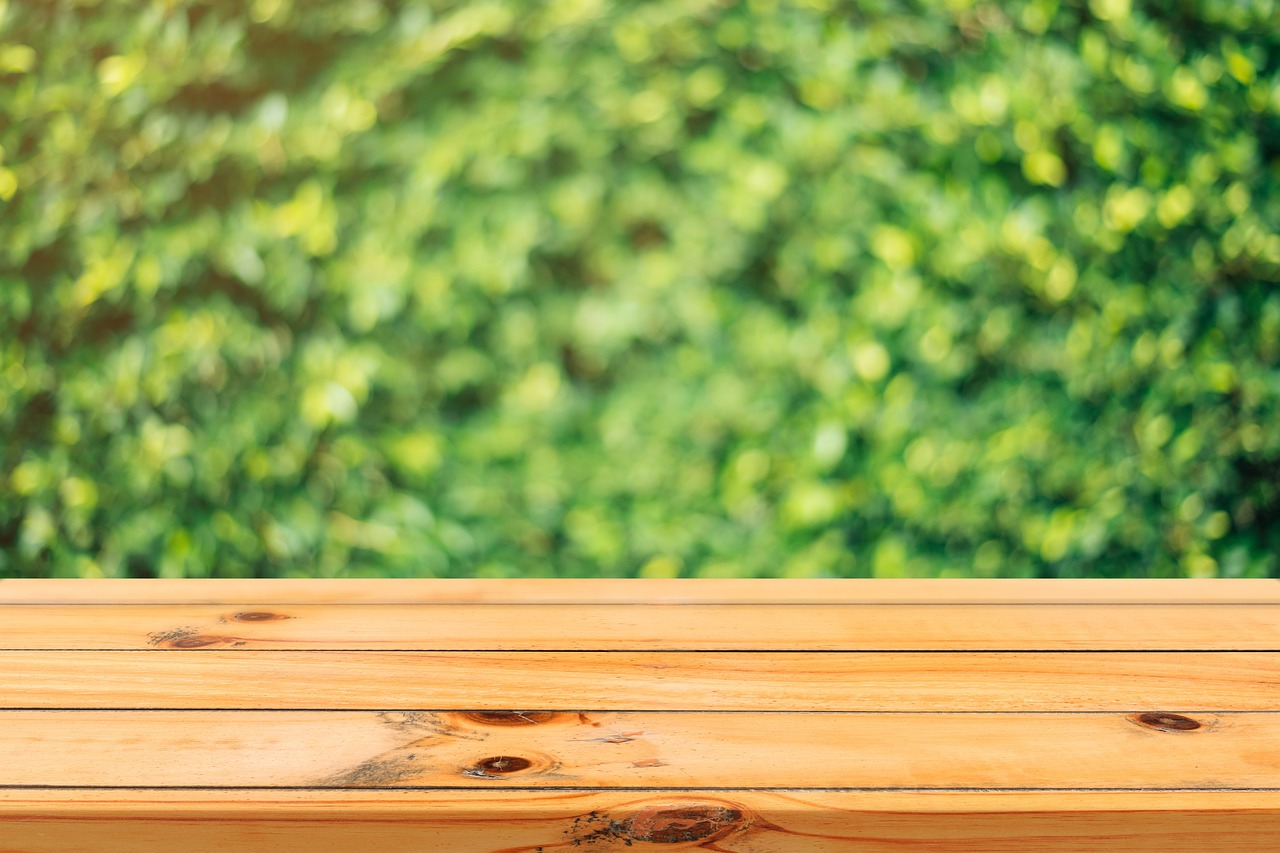
Repairing Scratches and Damage
Over time, even the most beautiful wooden vanity tables can suffer from scratches and minor damages. Whether it's from everyday use, the occasional bump, or simply the passage of time, it's essential to know how to restore your vanity table to its former glory. Fortunately, repairing these imperfections is often easier than you might think, and with a little effort, you can keep your piece looking fresh and inviting.
First, assess the damage. Is it a light scratch, a deeper gouge, or a stain? Each type of damage requires a different approach. For light scratches, you can often use a simple method such as rubbing a walnut or a crayon that matches the wood color directly onto the scratch. The natural oils in the walnut can help to fill in the scratch, while the crayon can provide a color match. For deeper scratches, you might need to resort to sanding the area gently with fine-grit sandpaper, followed by applying a matching wood stain.
If your vanity table has more significant damage, such as dents or gouges, you may want to consider using wood filler. Start by cleaning the area around the damage to remove any dust or debris. Then, apply the wood filler using a putty knife, ensuring that it fills the gouge completely. Once it’s dry, sand it down until it's smooth and flush with the surrounding surface. After sanding, you can apply a stain or finish to blend it in with the rest of the table.
For deeper scratches and larger areas of damage, you might also consider refinishing the entire tabletop. This can be a more extensive process, but it can yield stunning results. Here’s a quick overview of the steps involved:
- Strip the old finish: Use a chemical stripper to remove the existing finish, following the manufacturer's instructions carefully.
- Sand the surface: Start with coarse-grit sandpaper and gradually move to finer grits to achieve a smooth surface.
- Stain or paint: Apply your chosen stain or paint, making sure to follow the grain of the wood for a natural appearance.
- Seal it: Finish with a clear sealant to protect your newly restored surface from future damage.
Remember, prevention is also key in maintaining the beauty of your wooden vanity table. Use coasters for drinks, avoid placing hot items directly on the surface, and consider applying a protective wax or polish every few months. This not only enhances the shine but also creates a barrier against scratches and stains.
Q: How can I prevent scratches on my vanity table?
A: Use coasters for drinks, avoid placing sharp objects directly on the surface, and consider a protective cloth when using makeup or other items that may cause scratches.
Q: What should I do if my wood filler doesn't match the stain of my table?
A: If the wood filler doesn't match, you can lightly sand the area once it's dried and apply a matching stain to blend it in with the rest of the table.
Q: Is it necessary to refinish the entire table if there are only a few scratches?
A: Not necessarily. For minor scratches, localized repairs may suffice. However, if the surface is extensively damaged or worn, refinishing might be the best option.
Frequently Asked Questions
- What type of wood is best for a vanity table?
Choosing the right wood is essential for both durability and aesthetics. Popular options include oak for its strength, pine for its affordability, and walnut for its rich color. Consider the look you want to achieve and how much wear and tear the table will endure.
- What tools do I need to build a wooden vanity table?
You'll need a mix of power tools and hand tools for the job. Essential tools include a circular saw, drill, sander, chisels, and a hand saw. Having the right tools can make your project smoother and more enjoyable.
- Are power tools better than hand tools?
It really depends on your preferences and the specific tasks at hand. Power tools can speed up the process and make cutting easier, while hand tools offer more control for detailed work. A combination of both often yields the best results.
- What safety precautions should I take?
Always wear protective gear such as goggles, gloves, and a dust mask. Make sure your workspace is clean and organized, and familiarize yourself with each tool before use. Safety should always come first!
- How can I incorporate storage into my vanity table design?
Think about adding drawers or shelves to keep your essentials organized. You can also consider hidden storage options, like a lift-top or compartments, to maximize space while maintaining a sleek look.
- What finish should I use on my vanity table?
The finish can dramatically affect the appearance and longevity of your table. Options include stains for color enhancement, paints for a bold look, or sealants for protection against spills and scratches. Choose one that fits your style and needs!
- What are some tips for assembling my vanity table?
Start by organizing all your parts and tools. Follow your design plans closely, and take your time with each joint to ensure a sturdy build. Double-check alignment before securing anything to avoid any mishaps.
- How do I maintain my wooden vanity table?
Regular cleaning is key! Use a soft cloth and mild cleaner to wipe down surfaces. Consider polishing it occasionally to keep the finish looking fresh. Be proactive about repairs to scratches or damage to extend its life.
- Can I repair scratches on my vanity table?
Absolutely! For minor scratches, you can use a wood filler or a matching stain to blend them in. For deeper gouges, sanding and refinishing may be necessary. Keeping a maintenance kit handy can help you tackle these issues as they arise.



















